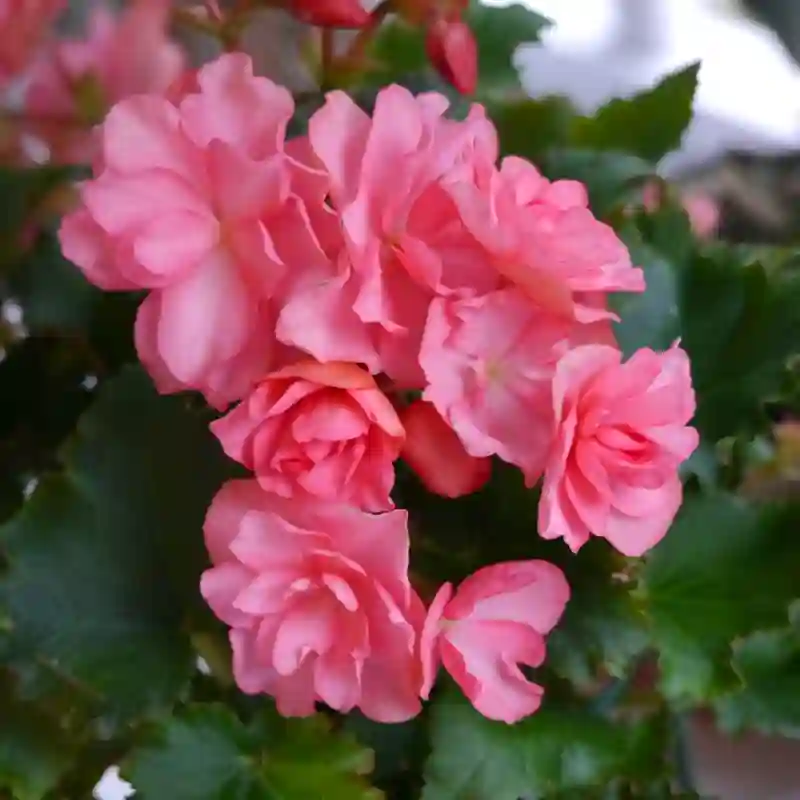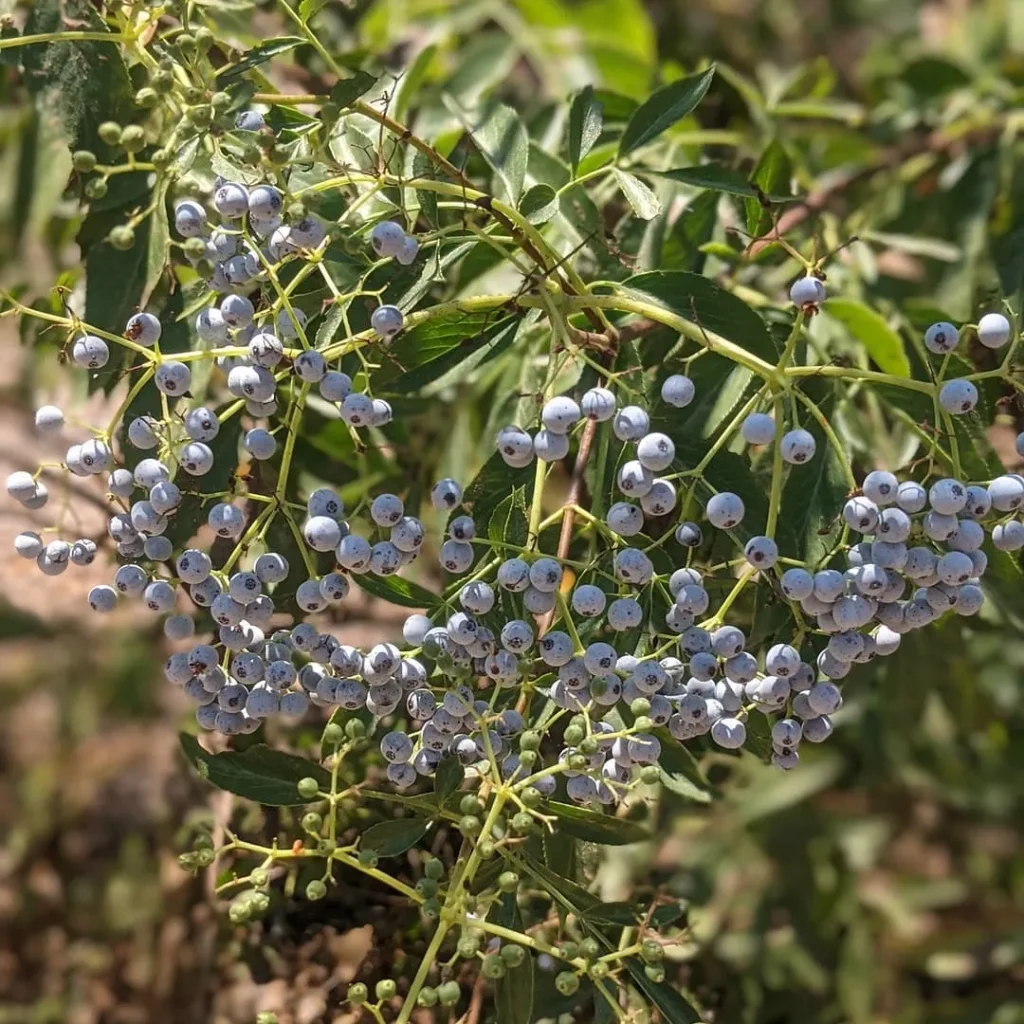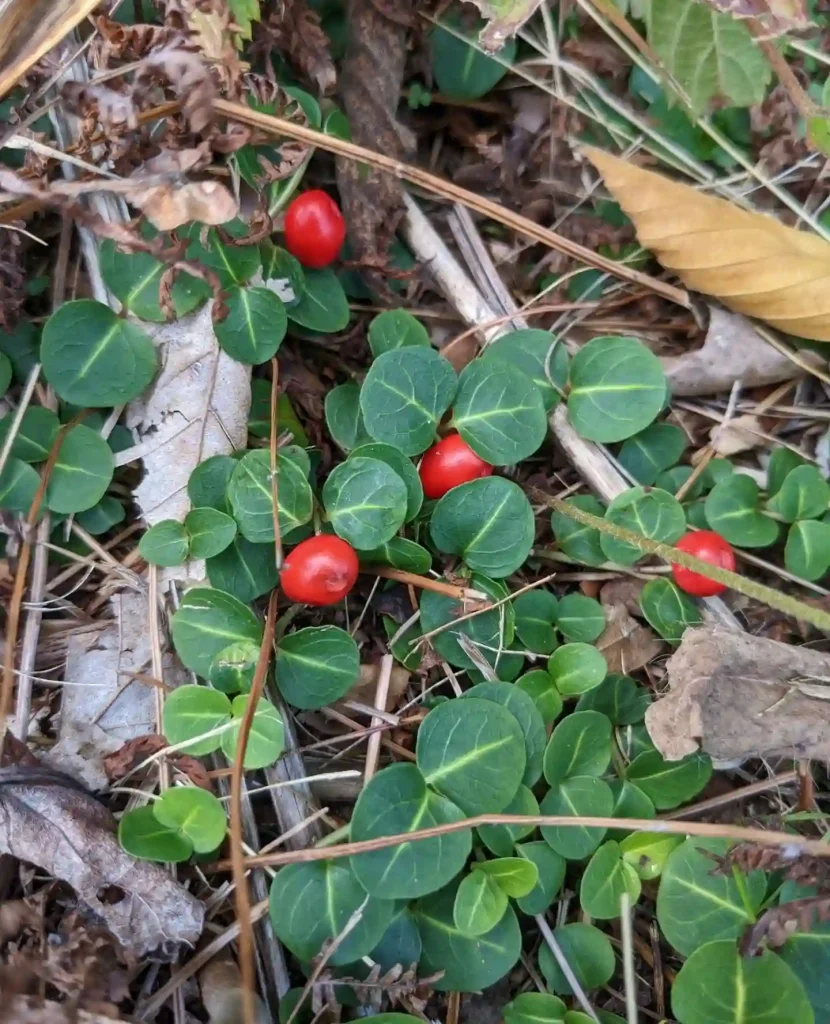1. Introduction to Philodendron Caramel: The Ember-Toned Beauty
1.1. What is Philodendron ‘Caramel’?
The Philodendron Caramel is a stunning and highly prized hybrid cultivar within the Philodendron genus, specifically known for its captivating and ever-changing leaf coloration. New leaves emerge with striking warm tones, ranging from reddish-orange, copper, or deep amber, which gradually mature into a rich, deep green. This unique color evolution, combined with its often slightly elongated and sometimes textured leaves, gives it an exceptional aesthetic appeal. As a climbing Philodendron, it adds lush vertical interest to any indoor plant collection, making it a favorite among collectors and enthusiasts.
1.2. Reasons for its Appeal
Philodendron Caramel captivates plant enthusiasts for several compelling reasons:
- Dynamic Foliage Color: The most striking feature is its leaves’ evolving color palette, offering a constantly changing display of warm hues.
- Unique Texture: Mature leaves often have a slightly ribbed or textured surface, adding another layer of visual interest.
- Vigorous Growth: It is a relatively strong and vigorous climber, making it satisfying to grow and train on supports.
- Collector’s Item: Its distinctive appearance and status as a hybrid contribute to its desirability and value in the plant community.
2. Origins and Distinguishing Characteristics
2.1. Origins
The Philodendron Caramel is a cultivated hybrid, a result of selective breeding to achieve its unique color-changing foliage. As a hybrid, it does not have a specific wild origin. However, its genetic lineage traces back to various Philodendron species native to the tropical rainforests of Central and South America. Its development is a testament to horticultural efforts to create visually stunning and stable cultivars for indoor cultivation.
2.2. Leaf Morphology and Coloration
The leaves of Philodendron Caramel are typically elongated, heart-shaped, and can grow quite large. The most defining characteristic is their color evolution:
- New Growth: Emerges in striking shades of reddish-orange, deep amber, or caramel-brown.
- Mature Growth: Gradually transitions to a rich, glossy deep green as the leaves fully expand and harden off.
- Texture: Mature leaves often develop a unique, somewhat corrugated or ribbed texture, enhancing their tactile appeal. While not typically described as having fenestrations like some Monsteras, its large, dynamic leaves are its primary ornamental feature.
2.3. Growth Habit and Rate
Philodendron Caramel is a strong climbing Aroid. In its mature form, it will produce robust aerial roots that readily cling to surfaces, allowing it to ascend moss poles, trellises, or other structures. Providing vertical support is highly recommended as it encourages the plant to produce larger, more mature leaves and promotes its natural upright growth habit. Without support, it tends to sprawl or trail. Its growth rate is generally moderate to fast under optimal conditions, making it a rewarding plant for those who enjoy seeing noticeable progress.
2.4. Comparison to Similar Philodendrons
The Philodendron Caramel is sometimes confused with other large, terrestrial or climbing Philodendrons, particularly those with reddish new growth or complex leaf structures. However, its unique color transition and leaf texture set it apart:
- Philodendron ‘Caramel Marble’: While similar in name and general hue, ‘Caramel Marble’ typically refers to a variegated form with cream or lighter yellow marbling in addition to the caramel tones, making it distinct from the solid color changes of the standard ‘Caramel’.
- Philodendron ‘McColley’s Finale’: This Philodendron cultivar also has new leaves that emerge in warm, reddish-bronze tones. However, ‘McColley’s Finale’ is typically a self-heading (non-climbing) Philodendron, forming a rosette of leaves, and its mature leaves are generally broader and less elongated, lacking the specific texture of ‘Caramel’.
- Philodendron ‘Prince of Orange’: Another popular Philodendron with orange new leaves. ‘Prince of Orange’ is also a self-heading variety, not a climber, and its leaves are typically a brighter orange, maturing to green without the distinct texture of ‘Caramel’.
The combination of its specific color-changing process, climbing habit, and unique leaf texture distinctly identifies Philodendron ‘Caramel’.
3. Comprehensive Care Guide: Nurturing Your Philodendron Caramel
Cultivating a thriving Philodendron Caramel requires consistent care to highlight its dynamic foliage coloration and robust growth, mimicking its tropical ancestry.
Table 1: Quick Care Guide for Philodendron Caramel
| Care Factor | Requirement Description |
|---|---|
| Light | Bright, indirect light (e.g., East-facing window). Crucial for color development. Avoid direct harsh sun. |
| Temperature | Ideal range: 18-27°C (65-80°F). Protect from sudden drops or cold drafts. |
| Humidity | Prefers higher humidity, 60% or more. |
| Watering | Water when top 1 inch of soil is dry. Allow to dry slightly between waterings. Ensure good drainage. |
| Soil | Well-draining, airy, rich in organic matter (aroid mix: potting soil + perlite + orchid bark). |
| Fertilization | Balanced liquid fertilizer, diluted, monthly in spring/summer. Withhold in fall/winter. |
| Pruning | Regularly prune for bushier growth and to remove leggy/damaged stems. |
| Repotting | Every 1-2 years, or when root-bound, in spring. Increase pot size slightly. |
| Support | Provide a moss pole or trellis to encourage climbing. |
3.1. Light Requirements
Bright, indirect light is paramount for Philodendron Caramel to develop its vibrant new leaf colors and maintain healthy growth. Place your plant near an east-facing window for ample morning light, or a few feet away from a south or west-facing window with a sheer curtain to diffuse intense light. Direct, harsh sunlight, especially in the afternoon, can easily scorch its leaves, leading to irreversible damage and dulling its unique coloration. Insufficient light, on the other hand, can lead to leggy growth, smaller leaves, and a less pronounced color change in new foliage. Regularly rotating the plant ensures even light exposure and balanced growth.
3.2. Temperature and Humidity
As a plant with tropical origins, Philodendron Caramel thrives in consistently warm temperatures, ideally ranging from 18-27°C (65-80°F). It is crucial to protect it from sudden temperature drops or cold drafts (e.g., near open doors, air conditioners, or heating vents), as temperatures below 18°C (65°F) can stress the plant, slow growth, and cause leaf damage.
Higher humidity levels, typically 60% or more, are greatly appreciated by Philodendron ‘Caramel’. While it can tolerate average household humidity, optimal growth, and pristine leaf appearance are achieved with higher moisture levels. Signs of insufficient humidity include crispy brown leaf edges or tips. Consider using a room humidifier. Grouping the plant with other moisture-loving plants or placing its pot on a pebble tray filled with water (ensuring the pot itself doesn’t sit in the water) can also help create a more humid microclimate. Occasional misting can provide a temporary boost.
3.3. Watering Practices
Proper watering is critical for Philodendron Caramel. It prefers its soil to be consistently moist but not soggy, allowing the top inch of soil to dry out between waterings. Water thoroughly, ensuring that the pot has excellent drainage holes and that any excess water drains out completely from the bottom. Never allow the plant to sit in standing water, as this is a primary cause of root rot.
The frequency of watering will depend on environmental factors like light, temperature, and humidity, as well as the pot size and soil mix. Expect to water more often during the warmer, active growing months (spring and summer). During the cooler, dormant months of fall and winter, reduce watering frequency significantly, allowing the soil to dry out more thoroughly between waterings.
3.4. Optimal Soil Mix and Repotting
A well-draining, airy, and nutrient-rich potting mix is essential for Philodendron Caramel. This mimics the loose, organic matter it would find in its native climbing environment. An ideal mix should promote good aeration while retaining sufficient moisture. A suitable blend, often referred to as an “aroid mix,” can include:
- High-quality indoor potting mix
- Perlite or pumice for excellent drainage and aeration
- Orchid bark for chunkiness and improved air circulation
- Coco coir or worm castings (optional) for moisture retention and added nutrients
Repotting: Repot your Philodendron Caramel typically every 1-2 years, or when you notice it has become root-bound (roots growing out of drainage holes, water running straight through the pot too quickly, stunted growth). Spring is the best time to repot, as the plant is entering its active growth phase. Choose a new pot that is only 1-2 inches larger in diameter than the previous one, ensuring it has ample drainage.
3.5. Fertilization Strategies
During its active growing season (spring and summer), fertilize your Philodendron Caramel monthly with a balanced liquid fertilizer, diluted to half the recommended strength. This provides the necessary nutrients to support vigorous growth and vibrant color development. Reduce or completely stop fertilizing during the fall and winter months when the plant’s growth naturally slows. Over-fertilization can lead to salt buildup in the soil, which can burn the roots and cause leaf damage (e.g., crispy brown tips). Always water the plant thoroughly before applying fertilizer to protect the roots.
3.6. Pruning and Maintenance
Regular pruning is beneficial for Philodendron Caramel to maintain its shape, encourage bushier growth, and remove any unhealthy foliage. You can prune any leggy stems or pinch off growing tips to promote branching and a fuller appearance. Remove any yellowing, brown, or damaged leaves using clean, sharp scissors or pruning shears. Pruning can be done during the active growing season. Regularly wipe the leaves with a damp cloth to remove dust, which improves the plant’s ability to photosynthesize and keeps the foliage vibrant.
3.7. Support
As a climbing vine, Philodendron Caramel greatly benefits from a sturdy vertical support structure. Providing a moss pole, trellis, or even a rough wooden stake encourages its natural climbing habit. This not only supports the plant as it grows but also often leads to the development of larger, more mature leaves with better color and texture. Its aerial roots will readily cling to the support.
4. Propagation Techniques: Expanding Your Collection
Propagating Philodendron Caramel is a rewarding way to create new plants. The most common and effective method is using stem cuttings. The best time for propagation is during the spring or early summer when the plant is actively growing.
4.1. Stem Cuttings
- Select a Healthy Stem: Choose a healthy, mature stem section that has at least one node (the bump on the stem where a leaf or aerial root emerges) and preferably one or two healthy leaves. Select a section that shows good color development if you want to emphasize that trait in the new plant.
- Sterilize Tools: Always use clean, sharp, and sterilized pruning shears or a knife to make your cuts. This prevents the spread of diseases.
- Make the Cut: Cut the stem just below a node. Remove any lower leaves that would be submerged in your chosen rooting medium to prevent rot.
- Rooting Hormone (Optional): Applying a rooting hormone (powder or gel) to the cut end can stimulate faster and more robust root development.
- Rooting Medium Options:
- Water Propagation: Place the cutting in a clear jar with fresh water, ensuring the node is fully submerged. Change the water every few days to keep it clean and prevent bacterial growth. Roots typically begin to form within a few weeks.
- Sphagnum Moss: Plant the cutting in moist, but not soggy, sphagnum moss. This medium provides excellent aeration and moisture retention, often leading to robust root development.
- Soil: You can also plant the cutting directly into a small pot filled with a well-draining, airy potting mix. Keep the soil consistently moist but not soggy.
- Provide Optimal Environment: Place your cuttings in a warm location that receives bright, indirect light. High humidity (e.g., within a propagation box or covered with a clear plastic bag to create a mini-greenhouse effect) will significantly accelerate the rooting process.
- Potting Up: Once the roots are a few inches long (for water or moss propagation), or significant new leaf growth is visible (for soil propagation), your new plant is ready to be transitioned to a larger pot with its permanent potting mix.
5. Troubleshooting Common Issues: Pests, Diseases, and Environmental Stress
While generally robust, Philodendron Caramel can encounter a few common problems if its specific care requirements are not met. Prompt identification and action are crucial for maintaining its health.
Table 2: Common Problems & Troubleshooting for Philodendron Caramel
| Problem | Symptoms | Solutions/Treatment |
|---|---|---|
| Yellowing Leaves | Older, lower leaves turning yellow. | Overwatering (most common), nutrient deficiency, natural aging. Adjust watering, fertilize, check roots for rot. |
| Brown Crispy Edges/Tips | Leaves browning and feeling crispy at edges. | Low humidity, underwatering, direct sun exposure. Increase humidity, adjust watering, move to indirect light. |
| Drooping Leaves | Leaves losing turgor, looking limp. | Underwatering (most common), severe overwatering (root rot), cold shock. Check soil moisture, inspect roots, ensure warmth. |
| Dulling/Less Vibrant Color | New leaves lack strong caramel tones, mature leaves are plain green. | Insufficient bright indirect light. Move to brighter spot. |
| Leggy Growth | Long stems with sparse leaves. | Insufficient light. Move to brighter location. Prune to encourage bushier growth. |
| Pest Infestations | Visible pests (mealybugs, spider mites, thrips, scale), sticky residue, distorted growth. | Isolate plant, treat with insecticidal soap, neem oil, or appropriate pesticides. Increase humidity. |
| Root Rot | Mushy stem base, black/brown, foul-smelling roots, yellowing/wilting. | Overwatering, poor drainage. Repot, trim rotten roots, improve drainage, reduce watering. |
| Fungal Leaf Spot | Various spots on leaves. | Improve air circulation, reduce humidity if too high, remove affected leaves. Fungicides if severe. |
5.1. Watering Issues
- Overwatering: This is the most common cause of problems. Symptoms include yellowing leaves (particularly older, lower ones), black/brown spots on leaves, a mushy stem near the soil line, and a foul, moldy smell from the soil. This eventually leads to root rot.
- Solution: Allow the top 1 inch of soil to dry out completely between waterings. Ensure the pot has excellent drainage. If root rot is suspected, unpot the plant, trim any rotted, mushy roots, and repot in fresh, well-draining soil. Reduce watering frequency.
- Underwatering: Symptoms include drooping or curled leaves, crispy brown edges or tips, and overall dull foliage. The plant may visibly droop when thirsty.
- Solution: Increase watering frequency. Ensure you are watering thoroughly so that water drains from the bottom of the pot, indicating the entire root ball has been moistened.
5.2. Light Issues
- Insufficient Light: Can lead to slower growth, smaller leaves, leggy stems (long gaps between leaves on the stem as it stretches for light), and a dulling or lack of the vibrant caramel tones in new growth.
- Solution: Move the plant to a location that receives brighter, indirect light. Consider supplementing with a grow light if natural light levels are consistently low.
- Too Much Direct Light: Harsh direct sun, especially during midday, can cause leaf scorch. Symptoms include brown, crispy patches or a faded appearance on the leaves.
- Solution: Relocate the plant to a spot with filtered light, or use sheer curtains to diffuse intense sunlight.
5.3. Humidity and Temperature Stress
- Low Humidity: Often causes the leaf edges or tips to turn brown and crispy. New leaves might struggle to unfurl properly and could become distorted.
- Solution: Increase ambient humidity using a humidifier, pebble tray, or by grouping plants together.
- Cold Stress: Exposure to temperatures below 18°C (65°F) can severely stress the plant, leading to leaf damage, wilting, and overall decline.
- Solution: Ensure the plant is in a consistently warm environment and protected from cold drafts from windows or air vents.
5.4. Pests
Common houseplant pests like mealybugs, spider mites, thrips, and scale can occasionally infest Philodendron ‘Caramel’.
- Symptoms: Visible insects (mealybugs with white, cottony masses; spider mites with fine webbing; thrips with silver streaks and black frass; scale with hard, immobile bumps), sticky residue (honeydew), or speckled, distorted leaves.
- Solution: Regularly inspect your plant, especially the undersides of leaves and stem crevices. Isolate infested plants immediately. Treat with appropriate organic pest control methods such as insecticidal soap, neem oil, or by wiping pests off with an alcohol-dipped cotton swab. Increasing humidity can help deter spider mites.
5.5. Diseases
- Root Rot: This is a serious fungal disease, almost always a result of overwatering and poorly draining soil.
- Symptoms: Yellowing, wilting leaves (even when the soil is wet), a mushy stem near the soil line, and black/brown, foul-smelling roots.
- Solution: Immediately remove the plant from its pot. Carefully inspect the roots and prune away all affected (mushy, black) sections with sterilized shears. Repot the plant in fresh, well-draining aroid mix, and adjust your watering schedule to allow the soil to dry adequately between waterings.
- Fungal Leaf Spot: Can appear as various spots on the leaves.
- Solution: Improve air circulation around the plant, reduce overly high humidity, and remove affected leaves. Fungicides may be used in severe cases.
6. Conclusion: Enjoying Your Thriving Philodendron Caramel
The Philodendron Caramel, with its dynamically colored and uniquely textured leaves, is a truly captivating and rewarding plant to cultivate. By consistently providing it with bright, indirect light, appropriate watering, high humidity, stable warm temperatures, and a well-draining soil mix along with adequate climbing support, you can ensure your ‘Caramel’ thrives. While it demands attention to its specific needs, the reward of nurturing its evolving beauty and watching it flourish will bring immense satisfaction and a distinctive touch of tropical warmth to your indoor space.
If i die, water my plants!



